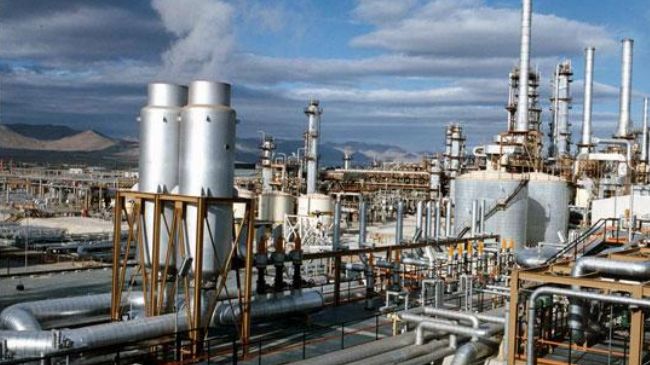Iran’s natural gas production to up in coming years

By Sara Rajabova
The U.S. Energy Information Administration (EIA) has predicted an increase in Iran's natural gas production in coming years.
EIA in its annual report about Iran's energy sector released on July 22 said Iran's gross natural gas production will increase to 10.6 trillion cubic feet in 2020. However it noted that the growth will depend on the pace of development of the South Pars field.
Iran's largest gas field is South Pars, a non-associated gas field located offshore in the middle of the Persian Gulf. South Pars is a portion of a larger gas structure that straddles the territorial water borders of Iran and Qatar. It is called the North field in Qatar.
South Pars reserves account for roughly 40 percent of Iran's total gas reserves, and the field is also estimated to hold 17 million barrels of condensate in place. Other major gas fields in Iran include: Kish, North Pars, Tabnak, Forouz, and Kangan.
Although repeated delays in field development and the sanctions on Iran's economy have had negative impact on the country's gas sector, Iran's natural gas output has been on the rise in the past few years.
Iran's gross natural gas production totaled almost 8.2 trillion cubic feet in 2012, increasing 3 percent from the previous year. Of the 8.2 trillion cubic feet produced, most of it was marketed (6.54 trillion cubic feet), and the remainder was re-injected into oil wells to enhance oil recovery (1 trillion cubic feet) and vented and flared (0.62 trillion cubic feet).
Re-injecting natural gas plays a critical role in oil recovery at Iran's fields. As a result, natural gas re-injection is expected to increase in the coming years.
Some estimates indicate that NIOC will require 7 to 8 billion cubic feet per day of natural gas for re-injection into its oil fields in the next decade, according to FGE.
In 2012, almost 40 percent of Iran's gross natural gas production came from the South Pars field.
Dry natural gas production is a subset of marketed production. Marketed production includes dry natural gas, liquid hydrocarbons, and natural gas used in field and processing plant operations.
Iran is the world's third-largest dry natural gas producer, after the United States and Russia, and accounted for nearly 5 percent of the world's dry natural gas production in 2012. The vast majority of Iran's production is consumed domestically. Domestic consumption has increased alongside production and totaled 5.5 trillion cubic feet in 2012.
Iran is the second-largest proved natural gas reserve holder in the world.
According to Oil & Gas Journal, as of January 2014, Iran's estimated proved natural gas reserves were 1,193 trillion cubic feet, second only to Russia.
Iran holds 17 percent of the world's proved natural gas reserves and more than one-third of OPEC's reserves. Iran has a high success rate of natural gas exploration, in terms of wildcat drilling, which is estimated at 79 percent compared to the world average success rate of 30 percent to 35percent, according to FGE.
Although finding new natural gas reserves is not a high priority because much of Iran's current reserves are undeveloped, there have been significant gas discoveries in recent years.
Besides, the Iran's petrochemical exports have increased recently. Deputy Managing Director of Iran's National Petrochemical Company (NPC) Mohammad Hassan Peivandi said on July 23 Iran's petrochemical exports have increased six percent over the first quarter of the current Iranian calendar year (started March 21, 2014), Press TV reported.
Peivandi said domestic sales of petrochemical products also soared by 6.6 percent during the same three months compared to the corresponding period of last year.
The figures show an average of six percent rise in petrochemical exports and a 7.3-percent increase in their domestic sale, Peivandi added.
He noted that production of petrochemical industries has jumped by 6.5 percent over the same period due to increased efficiency and reduced work stoppage in petrochemical units.
Peivandi further went on to say that in terms of value, the sales of petrochemical products in the three-month span were 13 percent higher than the corresponding period last year.
Iran produced 40 million tons of petrochemicals in the last calendar year, with $9 billion worth of its products being exported.
The country plans to increase its petrochemical exports to $ 12 billion this year.
Here we are to serve you with news right now. It does not cost much, but worth your attention.
Choose to support open, independent, quality journalism and subscribe on a monthly basis.
By subscribing to our online newspaper, you can have full digital access to all news, analysis, and much more.
You can also follow AzerNEWS on Twitter @AzerNewsAz or Facebook @AzerNewsNewspaper
Thank you!
